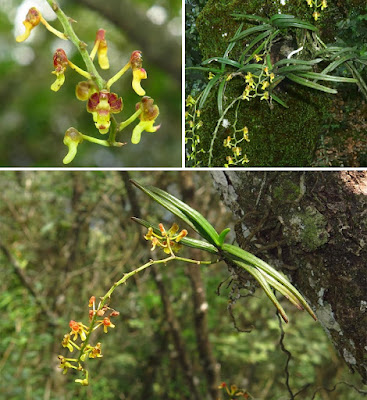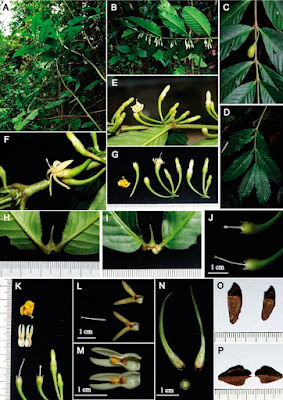 |
Diaphanes uvaparanagama Wijekoon,
in Wijekoon et Wegiriya, 2024. Asian Journal of Conservation Biology. 13(2); |
ABSTRACT
A new species, Diaphanes uvaparanagama Wijekoon sp. nov., from a freshwater-associated habitat in Uva province, Intermediate Zone, Sri Lanka, is described using males and reliably associated larvae. Males of this species are distinguished by a transparent pronotum and elytra with bright red thoracic terga and mesocutellum, pale yellow abdominal ventrites, and medial restricted photogenic organs. The conical-shaped photogenic organs challenge the traditional generic diagnosis of Diaphanes using light organ morphology.
Key words: Diaphanes, fireflies, new records, Sri Lanka
 |
Diaphanes uvaparanagama (Male);
A Pronotum (dorsal). B. Elytra (dorsal). C. Head & Antennae. D Thorax & Legs; E. Abdomen (ventrites I-VIII). G. Light organ in ventrite VII & VII. (Scale bar = 1mm) (Note: natural colors are faded in alcohol specimens) |
Family: Lampyridae Rafinesque, 1815
Subfamily: Lampyrinae Rafinesque, 1815
Genus: Diaphanes Motschulsky, 1853
Diaphanes uvaparanagama Wijekoon sp. nov.
Diagnosis:
Male: 10–11 mm long, distinguished from other recorded Diaphanes by the transparent pronotum and elytra
with vivid red thoracic terga and mesocutellum, distinctly pale yellow abdominal ventrites (I - VIII), black
legs except the pale yellow femora, LO in both V6 and
V7 are median restricted, conical-shaped and milky
white (Figs. 2 - 5)
Larvae: 28.0–30.0 mm long, black dorsum with distinct white vertical spotted lines, pale yellow spots on
posterior margin of each segment and outer margin of
entire body, mid sagittal line clear, body elongated rather wide, first abdominal segment less longer than others (Figure 6).
Etymology: This species is named for the area “Uvaparanagama,” where the first specimen was found. This area is located in Welimada, Uva Province, Sri Lanka. We use the name Uvaparanagama as a noun in apposition to preserve the original language.
W. M. C. D. Wijekoon and H. C. E. Wegiriya. 2024. A New Species of the Genus
Diaphanes (Coleoptera: Lampyridae: Lampyrinae),
D. uvaparanagama Wijekoon, from Sri Lanka.
Asian Journal of Conservation Biology. 13(2);








































